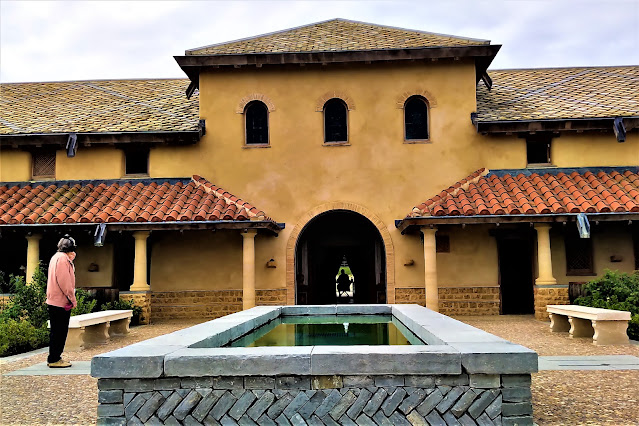Carlisle Roman Site (2)
Artist's Impression of Roman site at peak
Introduction
Yesterday, I undertook my 7th visit to this important Roman site at Carlisle (N.W. England) since 2023.This blog report should make useful background reading.
Latest Information on the Carlisle Roman Site.
The above luxury complex sat somewhat incongruously about one mile south of Hadrian's Wall which was the northern boundary of the Roman Empire and beyond which lay a territory occupied by hostile Picts.The key to this enigma probably rests with the Emperor, Septimus Severus who may have used the site as base during AD 208-211 (approx.) when he was engaged in extensive military campaigns in the north (across the Wall).
In terms of date lines:
- The temple (bottom right) is Romano-British.
- The bathhouse (centre) is probably military, c. 130 AD.
- The main building is c. 209-400 AD
After the Severan period the buildings appear to have undergone progressive decline due to poor maintenance.
The site is dynamic and subject to on-going examination and re-examination as new material is found and exposed.
Here is a lady's bone hairpin, one of many found on site. This suggests the elaborate bathhouse was used by females, probably wives of army officers.
These large stone blocks revealed by the archaeologists my have supported upright timbers.
Drains and other groundwork
Broken sarcophagi. These were used for transport and storage of wine and olive oil.
This structure has yet to be formally identified.It has characteristics of a cist burial but it contains no bones Cist graves tend to be small, stone- built and coffin -like box or ossuary used to hold bodies of the dead.They usually date from the pre-Roman, Bronze Age.
Artist's impression of one aspect of the site
Another reconstruction view. Note that 'Severan' alludes to the time of Emperor, Septimus Severus.
Dog's paw print made on tile whilst drying in the sun.
Finger marks relates to testing dryness of the tile during manufacture.
IMP stamp indicates construction was associated with the Emperor. Abbreviation of Imperator.
Animal bones, including horse. Probably remains of a meal.
Slag from furnace
Rare Roman glass. This was made by rolling out molten glass on a flat, sand covered surface.Used for letting in light.
Shell used for making Tyrian Purple. a dye. This colour was the exclusive preserve of the Emperor.Because of the complicated manufacturing process it may have been worth three times that of gold.The dye is lightfast and does not fade.
To date no evidence of mosaic floorings has been found. This is unusual for a high status Roman building..
More Images
From this image it is evident that the (light grey coloured) Roman wall was integrated into the 11th/12th century defences of Carlisle Castle. For about 1000 years (post Roman era) there was little real change in military weaponry and tactics.
Replica Roman shield and kit on display at the excavation for educational purposes.The shield carries the inscription COH1 TVNG which probably indicates the First Cohort of Tungrians.This was a 1000 strong infantry unit from modern-day Belgium which at various times were stationed at Vindolanda, Carrawburgh, Cramond and Castlecary.An original Roman shield can be seen via this link.
More Information
More information on both Hadrian’s Wall and the Antonine Wall (Scotland) can be found in Visitors’ Guide to Scotland, ISBN 978-1-9161332-0-4. Also available via Kindle.




















Comments
Post a Comment